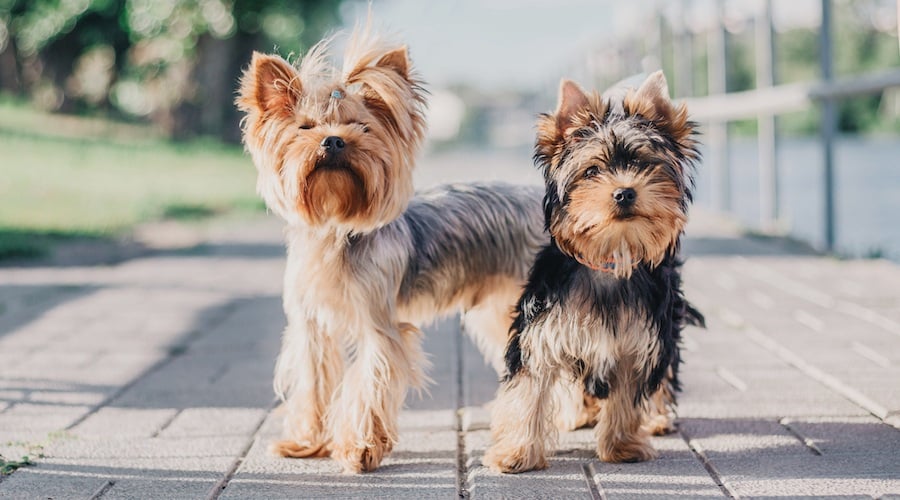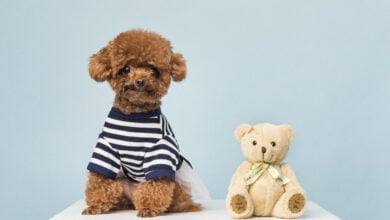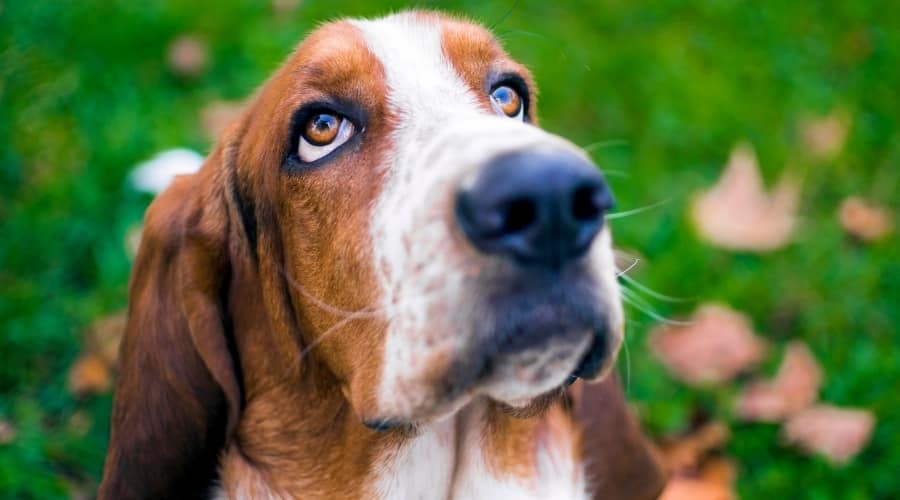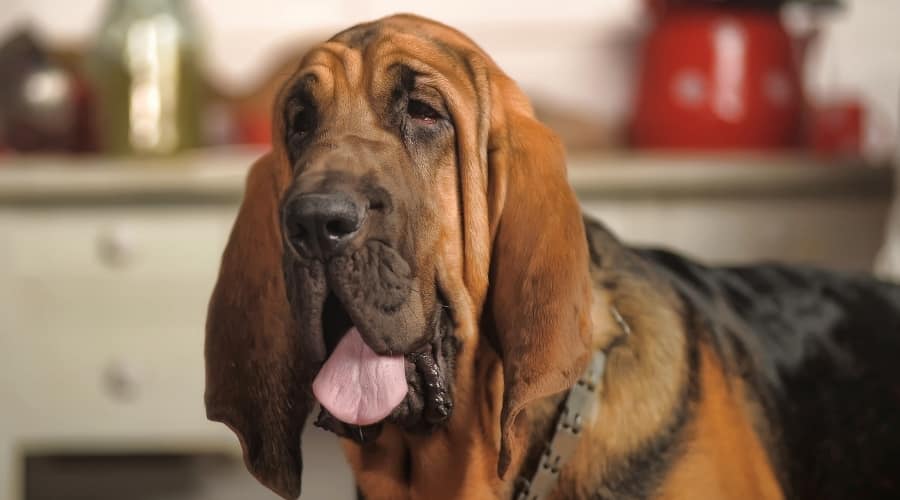24 High-Energy Dog Breeds That Think Sleep Is for Losers
When you purchase through links on our site, we may earn a commission. Here’s how it works.
These aren’t just active dogs, they’re four-legged rockets with fur. If you’re looking for the most high-energy dog breeds, you’re about to meet the canines that were bred to run marathons, chase livestock, and guard entire compounds, not nap on the couch.
Table of Contents
These 24 pups need a mission, a workout, and usually, a second one right after. Without it? They’ll find their own “fun,” which often involves eating your shoes or turning your yard into a moon crater. Think you’ve got the energy to keep up? Let’s find out…
Why Are These Dog Breeds So Hyper?
Short answer? They were built for full-throttle days. Every. Single. Day...
Most high-energy dog breeds come from working, herding, or sporting backgrounds. That means they were bred to chase livestock, patrol borders, retrieve game, or pull sleds for hours without stopping. Their energy isn’t a personality quirk. It’s wired into their DNA.
What feels like “too much dog” in a living room made total sense on a ranch or battlefield. If you’re not giving them a job, they’ll invent one, often involving digging, chewing, barking at shadows, and other destructive behaviors.
Basically:
- High-energy = working history
- Modern homes = not enough stimulation
- Result = chaos (unless you’re prepared)
4 Maximum Drive, Maximum Chaos Canines
These dogs aren’t “active”, they’re full-blown job addicts. These mission-driven dynamos were bred for guarding, patrolling, and takedown-level obedience.
The high-energy dog breeds in this section demand more than walks; they need purpose, structure, and a serious outlet. Without one? They’ll outsmart and outmaneuver you before breakfast. If you’re not ready to be a full-time handler, think twice.
1. Belgian Malinois
Like a Navy SEAL with ADHD. Unstoppable, intense, and always scanning for threats.
This Belgian Malinois is the real deal: used by military special forces and elite police units. Their stamina is nearly unmatched, and their need to work is borderline obsessive. Daily training, advanced obedience, agility, scent work, you’ll need all of it. Without a job, they become neurotic fast.
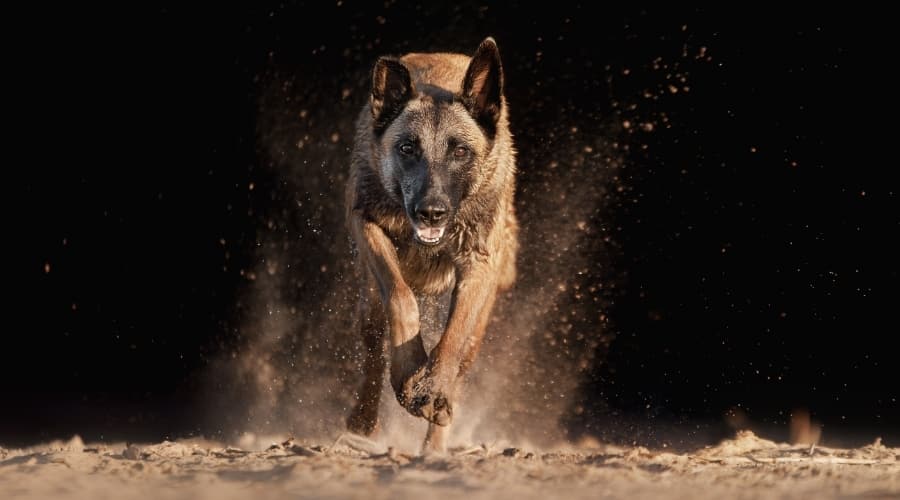
But with great drive comes great responsibility. Without daily mental and physical workouts, think advanced obedience drills, tracking games, bite training, agility courses, they’ll self-destruct in your living room.
This is not a “tire them out with fetch” dog. It’s a “build them a job” dog. And if you don’t, they’ll turn your drywall into that job. This breed bonds hard, learns fast, and demands everything from their human. They’re incredible partners, but only if you can keep up.
Still not convinced the Belgian Mal is basically a fur-covered special ops unit? Watch this short compilation of real Belgian Malinois doing what they do best: launching over walls, scaling ladders, and chasing down “bad guys” like a four-legged missile.
2. Boxer
The class clown who can bench press your coffee table.
Boxers are all muscle, all bounce, and all heart. While goofy and affectionate, they need structured play, mental games, and physical challenges to keep them from becoming destructive. If bored, they’ll happily chew your baseboards into mulch.

Boxers love their families, and their boundless energy makes them a great fit for an active family who loves to play outdoors.
Ideally, you’ll be able to offer them at least two long walks daily, plus additional playtime. Boxers love to be with you, so provide them with plenty of dog toys to help occupy them when you can’t play.
Boxers could play outside all day in temperate weather, but they need a securely fenced yard (or a wireless fence) to do so safely. They are athletes who can jump much higher than the average dog, and they’ll clear a four-foot fence with ease.
3. Doberman Pinscher
Elegant, intense, and two steps ahead of you.
Doberman Pinschers are alert, intelligent, and bred to protect. They’re fast learners and also fast movers. This is a breed that needs discipline, structure, and leadership. Skip the walk and they’ll pace your house like a CEO with no meetings.
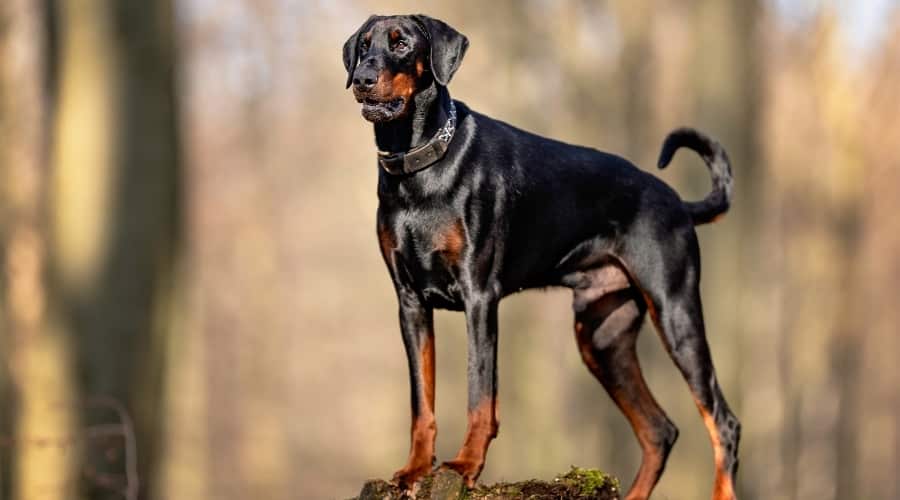
Originally bred to protect tax collectors (yes, really), this breed blends loyalty, athleticism, and hyper-awareness into one powerfully built package. Dobies are incredibly people-focused and thrive on structure.
Without strong leadership and daily engagement, they can get restless, anxious, and reactive. This isn’t a dog that casually lounges while you binge-watch TV. They’re watching, pacing, waiting for the next command… or the next squirrel.
They excel in advanced obedience, agility, scent work, and personal protection. But be warned: they’ll quickly sense if you’re uncertain, distracted, or just trying to wing it. And they’ll take over.
4. German Shepherd
The overachiever who turns every walk into a patrol.
One of the most versatile breeds ever developed, the German Shepherd excels in everything from protection to search and rescue. But their loyalty comes with a price. Without serious daily engagement, they can become anxious or destructive. Smart, but high-maintenance.
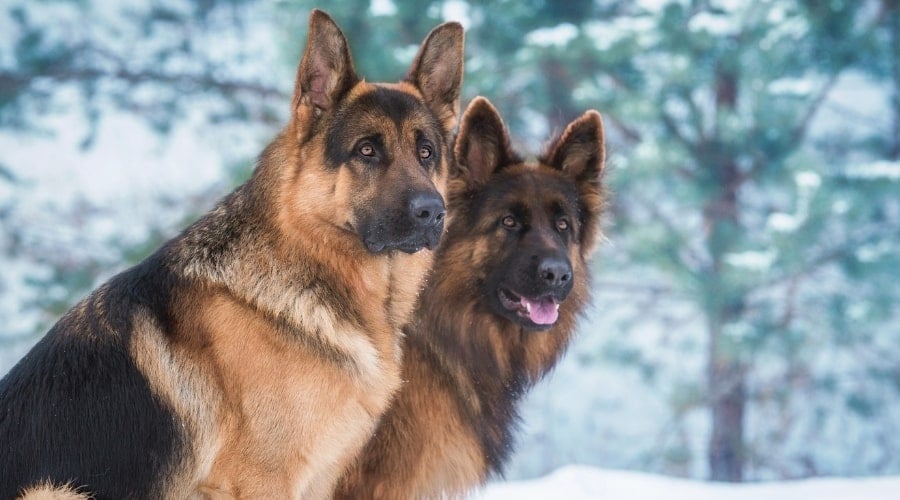
German Shepherds go to great lengths to please their owners. Their intelligence, loyalty, and obedience make them very trainable. German Shepherds’ legendary protective characteristics keep them attuned to their person’s needs.
Trainers initially developed Schutzhund (protection dog training) for GSDs. Although many breeds work well for Schutzhund, the German Shepherd excels. Intelligent and trainable, they are highly biddable and eager to work with their handler.
Born to Herd: 6 Relentless Ranch Dogs
These dogs aren’t chasing balls, they’re chasing jobs. Bred to herd sheep and cattle, these high-energy breeds are agile, obsessive, and wired to move. If you don’t give them a herd, they’ll make one (and yes, that might be your furniture or kids).
1. Australian Cattle Dog
Built like a tank. Moves like lightning. Thinks five steps ahead.
This powerhouse was bred to push stubborn livestock across rugged terrain. Australian Cattle Dogs, aka Heelers, are intelligent, independent, and intensely loyal. But without challenges, they’ll turn destructive fast.
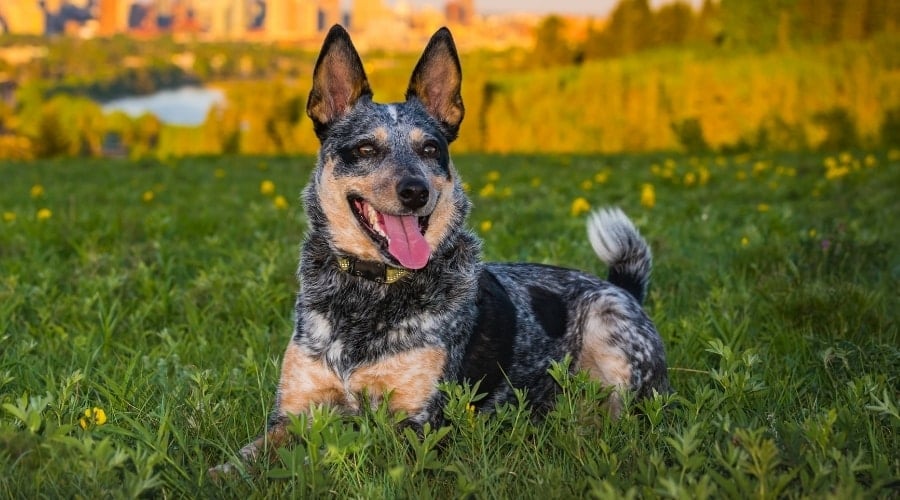
Their energy isn’t just physical, it’s mental. They can become obsessive, destructive, or downright defiant without structure and stimulation. Daily runs, puzzle toys, obedience drills, and “work” (like herding-style games or advanced fetch) are a must.
Heelers bond deeply with one or two people and expect leadership, not passive companionship. This is not a breed you “tire out”, it’s a breed you out-think. Good luck.
2. Australian Kelpie
So fast and focused, they look like they run on Red Bull.
The Australian Kelpie is a working dog in the purest sense, bred to control massive flocks of sheep in the scorching Australian Outback. They’re lean, lightning-fast, and known for “backing” (literally running across the backs of sheep) to keep a herd moving.
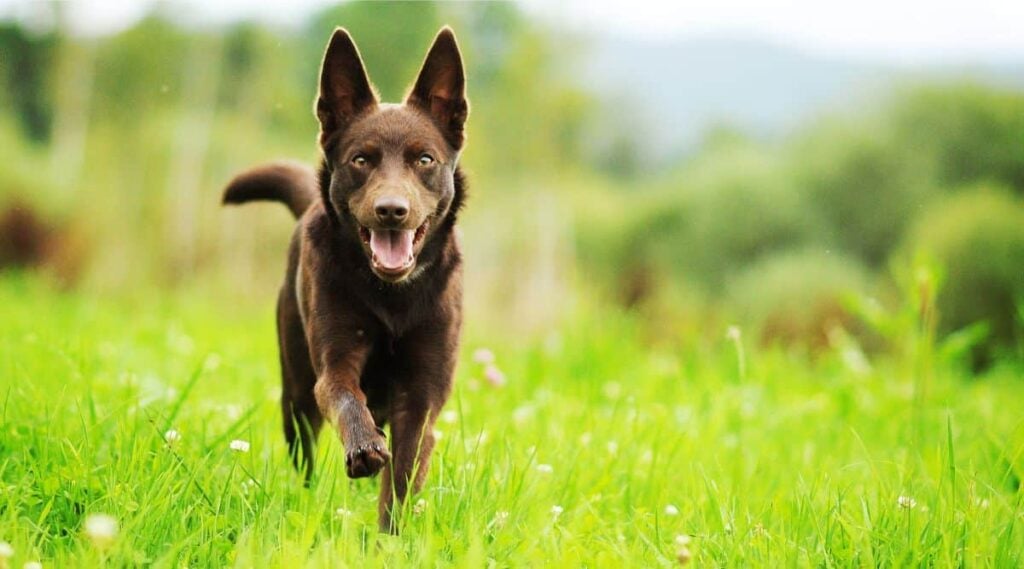
Kelpies can herd 1,000 sheep in a single day, and still want to play fetch after. Brilliant and tireless, they’ll find trouble if they’re under-stimulated.
Kelpies need more than a walk or yard; they need daily tasks that burn off their relentless physical and mental energy. If under-stimulated, they’re wickedly intelligent and can become escape artists, obsessive chasers, or nonstop barkers.
They’re also famously loyal and trainable, but only in the hands of someone who can keep up. Think you’re active? Kelpies will test that theory.
3. Australian Shepherd
Fluffy, friendly, and a full-blown workaholic.
Australian Shepherds love their people, but love movement even more. They crave agility work, hikes, and mental puzzles. Skip the stimulation, and they’ll herd your living room into chaos.
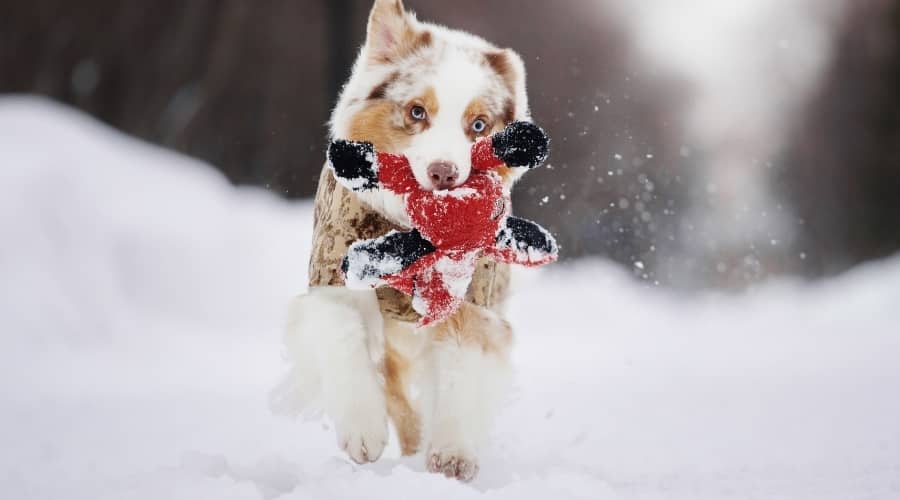
Aussies are popular with modern homes for their attractive patterns, although they originally developed as heelers to move cattle in Australia. Some of these ranchers set sail for California, and the local ranchers were so impressed by the dogs that the Aussie is still the cowboy’s canine colleague of choice.
Aussies will try to herd anything from cattle to cats, and their heel-nipping habit isn’t for everyone. They are clearly pretty, but you need to consider their high-energy needs more than their gorgeous aesthetic if you want a harmonious home life.
4. Border Collie
Basically, the Einstein of the dog world, but with zoomies.
Border Collies are brainiacs with a herding drive that never shuts off. They need daily mental challenges, fast-paced games, and a purpose, or they’ll go stir-crazy.
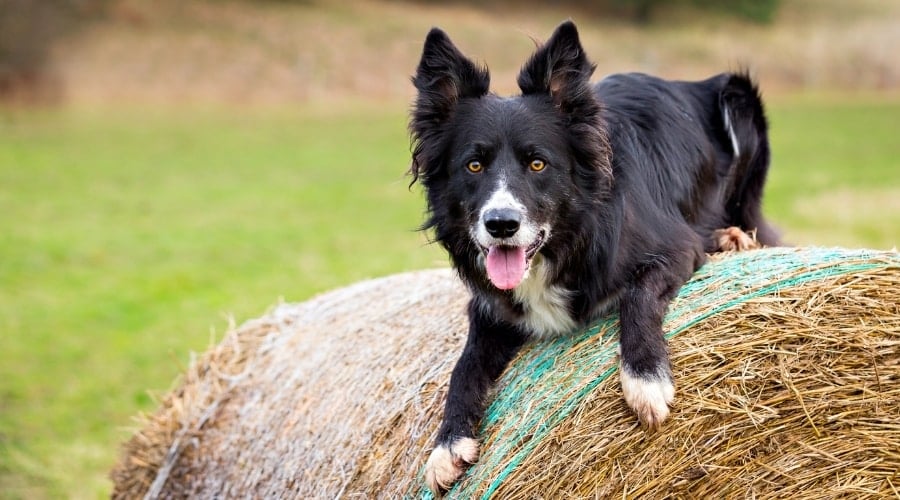
Border Collies are the most widely used herding dogs in many countries. They are incredibly clever and highly trainable, and are ranked as the most intelligent dog breed in the world. Their AKC breed description goes so far as suggesting they have the “uncanny ability to reason.”
This same ability to make a decision based on multiple factors makes the Border Collie able to decide to move the herd when out of range of their Shepherd. This independent streak is necessary for a good herding dog, but may frustrate their owner if they ignore their commands.
5. Pembroke Welsh Corgi
Small dog. Big attitude. Even bigger work ethic.
Originally bred to herd cattle, Corgis are deceptively energetic and bossy. These herding dogs have plenty of energy to drive cattle by nipping at their heels. They thrive on movement and mental stimulation and love telling you what to do.
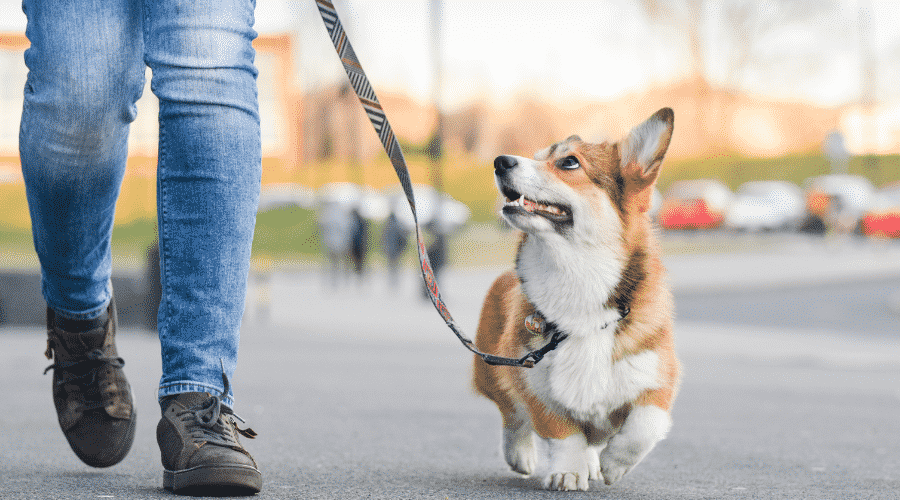
They are trainable due to their intelligence, but come with a stubborn streak that can make training frustrating. Corgis are less biddable than many other dogs because they think for themselves, as a good herding dog should.
Although Corgis learn desirable behaviors quickly, they just as quickly learn how to circumvent authority. Corgis are independent thinkers; even if they quickly grasp what you want them to do, there’s no guarantee they’ll do it.
Don’t let their fluffy butts fool you, they pair best with an experienced owner who understands the breed. There are two types of Corgis, the Pembroke and the Cardigan, and the Pembroke is the most active of the two.
6. Shetland Sheepdog
Looks like a mini Lassie. Thinks like a chess player on espresso.
Shetland Sheepdogs are smart, vocal dogs who are lightning-fast learners. They shine in agility and obedience, but hate boredom. Give them a job or they’ll make up one (usually loud).
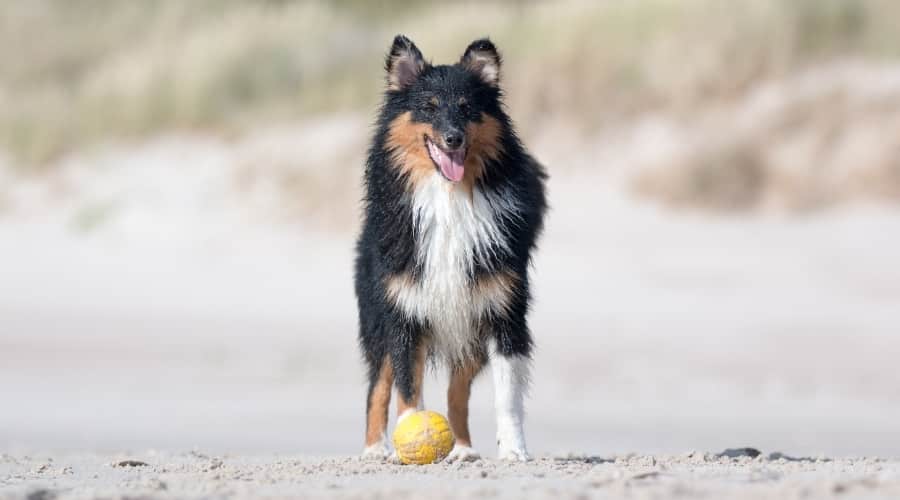
Shetland Sheepdogs’ sensitivity makes them exceptionally attentive and responsive pets. They excel at obedience, agility, and herding trials that channel their energy and intelligence productively. For the right individual, they can be easy to train.
They prefer a quieter home and are ill-suited to a loud, overly stimulating environment. They tend to bark and be wary of strangers, making them excellent family watchdogs, too.
Zoom and Retrieve: 6 High-Energy Sporting Breeds
These dogs were born to move and bring stuff back. Whether it’s ducks, tennis balls, or your lost sock, these high-energy sporting breeds have stamina for days and a drive that’s all gas, no brakes. They’re social, intelligent, and thrive on activity… but don’t mistake friendliness for low maintenance.
1. English Springer Spaniel
Charming goofball with a hidden turbo mode.
English Springer Spaniels are bird-hunting dogs that are affectionate, eager to please, and secretly unstoppable. Without daily exercise and interaction, they’ll literally bounce off your walls.
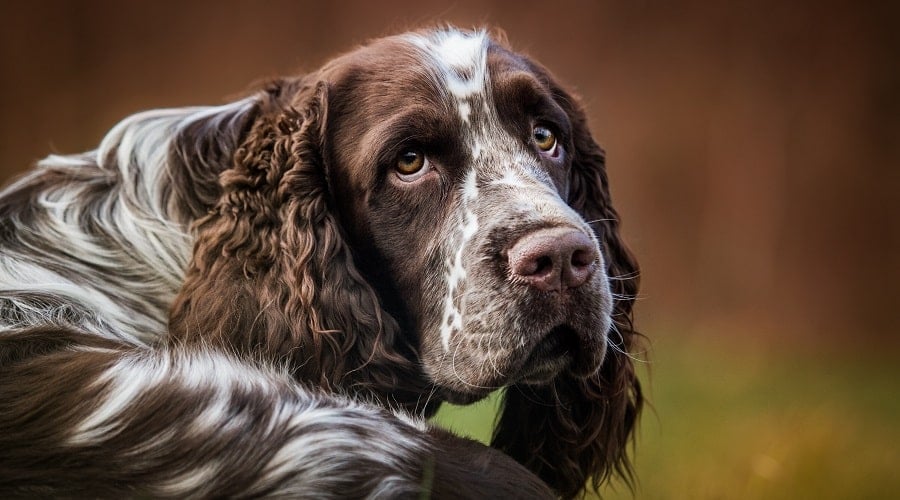
English Springers are incredibly people-oriented and eager to please, making them easy to train, but only if you can keep their attention. Without enough daily movement (and we mean more than a backyard stroll), they’ll find their own “projects,” like barking at shadows, or digging up flowerbeds.
They have a tremendous amount of drive and energy to handle the multiple tasks in the field. The Springer flushes small game for one minute, sits back for the hunter to take a shot, and then retrieves. Springers love long walks, retrieving, and swimming, and are suited to an active outdoor lifestyle.
2. Golden Retriever
Golden heart, golden energy, and golden appetite for attention and fetch.
Don’t let the chill smile fool you, Golden Retrievers need serious physical and mental activity to stay sane. Bored Goldens = chewed shoes, shredded toys, and guilt-inducing sad eyes.
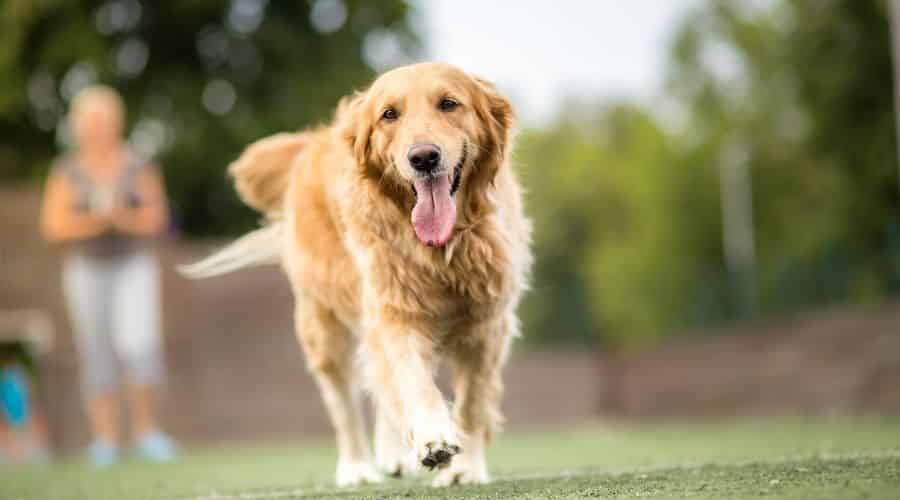
The Golden Retriever lives to please their owner. Their retriever instinct makes them naturally biddable dogs, so even though they are high-energy, it’s not so difficult to keep them. They look to their owner for direction.
Inherently obedient, the Goldens’ devotion to their family is part of what makes them so trainable, and their intelligence and ability to learn commands are the other. Goldens are the life of the party at dog-friendly sporting and children’s events and never tire of fetching a ball for any child willing to throw it.
3. Irish Setter
Elegant chaos on four legs.
Known for their beautiful red coats and goofy personalities, Irish Setters are high-endurance runners who need long exercise sessions and freedom to sprint. They don’t really do “still.”
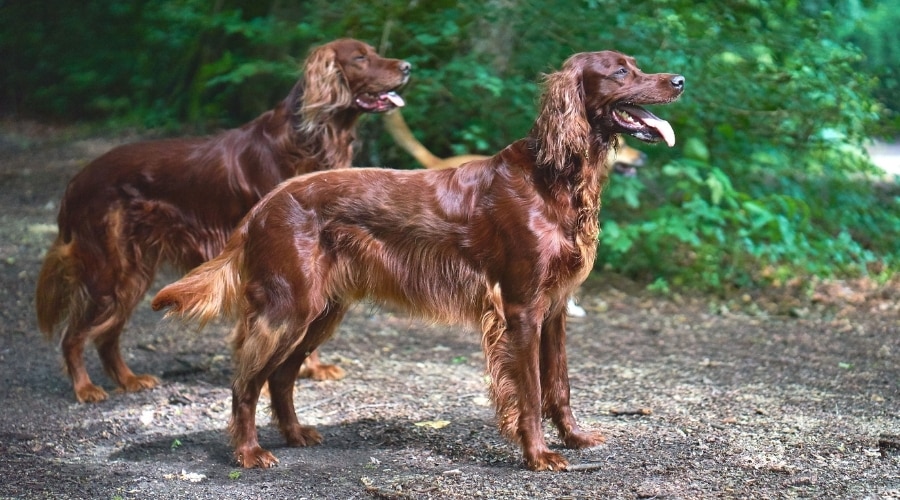
The Irish Setter is among the swiftest sporting dogs and is built for speed and grace. Their glossy mahogany to chestnut coats also make them among the most beautiful dog breeds.
They’re a great dog for active people with a loving temperament and plenty of energy to fetch tennis balls for the kids. This Irish Setter may be your perfect match if you want an adventurous and energetic exercise partner.
4. Labrador Retriever
America’s sweetheart… with Olympic-level fetch addiction.
Loyal, smart, and loaded with stamina, Labrador Retrievers love water, play, and movement. They’re not hyper, but they are high-volume. Think: daily exercise plus brain games, and more.
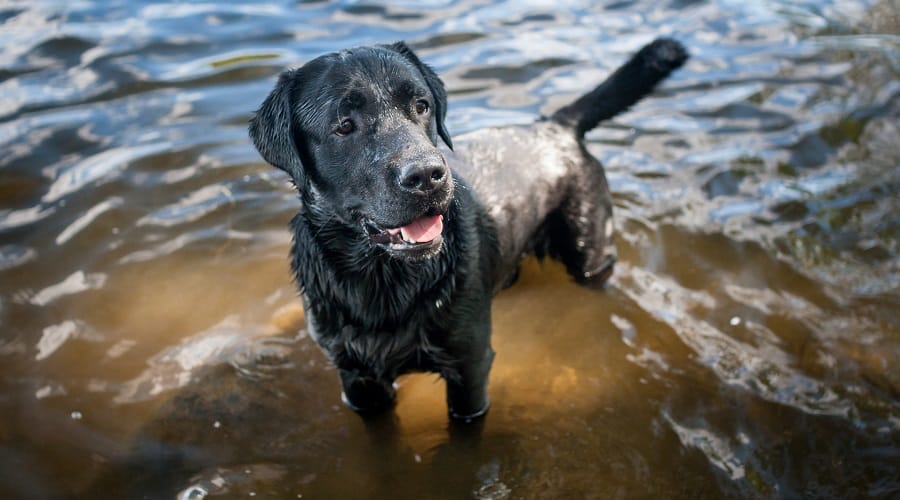
Labrador Retrievers’ eagerness to please their human partner makes them one of the most popular family companions. The breed has a long history of working side by side with people and is athletic and biddable.
They are praise-motivated, and while they may not learn as quickly as some other breeds, they learn happily and willingly. Their intelligence, pleasant nature, and desire to please make them excel in fields as diverse as a hunting companion, guide dogs, search-and-rescue work, therapy work, and narcotics detection.
Labs like almost everyone, so trips to the dog park for games of fetch or jogs around the neighborhood are opportunities to socialize for both of you. They can calmly settle and relax at home when given sufficient exercise.
5. Vizsla
Hungarian hunting machine with clingy sidekick vibes.
The Vizsla is a sleek, muscular breed built for speed and long runs, but also extremely people-focused. Leave them alone too long, and they’ll invent chaos (and chew it).
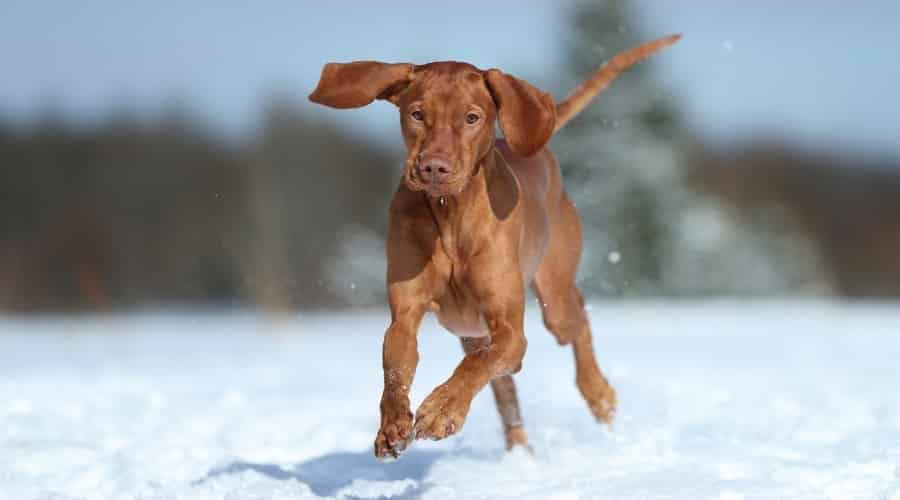
Originally bred in Hungary to track, point, and retrieve over miles of rugged terrain, these dogs are built like athletes and act like stalkers (in the most affectionate way possible). They don’t just love their humans; they attach to them. They are a Velcro breed, for sure.
Vizslas need two things: a vigorous daily workout and constant human contact. A lonely, under-exercised Vizsla becomes a destructive, anxiety-ridden blur of whining and shredded throw pillows. They’re best for runners, hikers, or anyone ready to treat dog ownership like a sport.
If you give them purpose, they’re also one of the most trainable breeds. Otherwise, they’ll turn your house into an indoor track and your furniture into hurdles.
6. Weimaraner
Graceful… until they go gremlin.
Weimaraners look like statues carved from silver, but under that elegance is a full-time mischief engine. Bred in Germany to hunt large game like boar and deer, Weims are fearless, fast, and always ready to move.
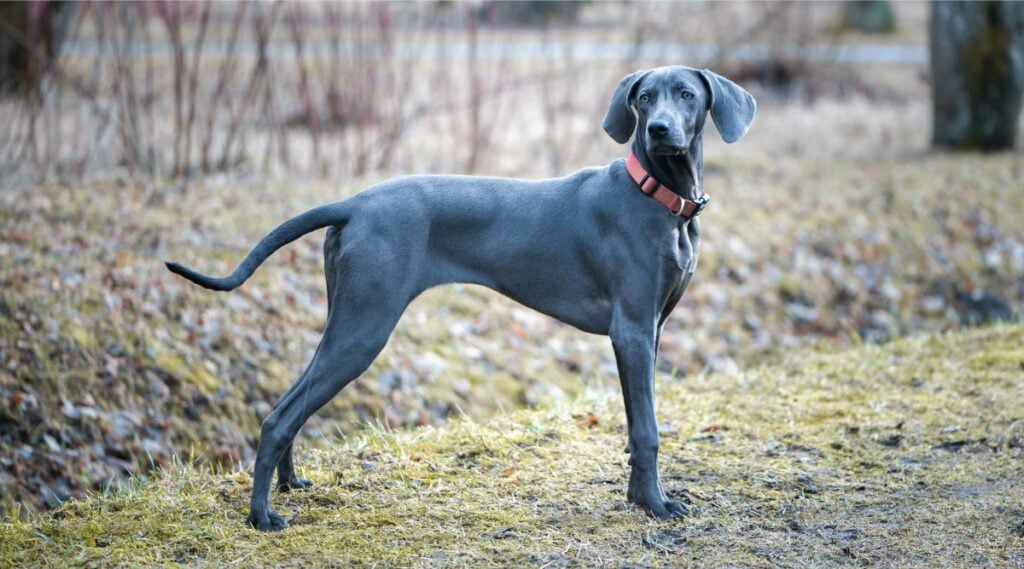
Weims are famously loyal, slightly dramatic, and never far from chaos when bored. This breed doesn’t “do chill” by default.
Left alone without enough activity, they’ll chew, dig, howl, and even try to open doors (yes, really). They’re also emotionally needy, part-time Velcro dogs, part-time performance artists.
The right owner? Active, consistent, and willing to commit to structure. With that combo, Weimaraners shine in obedience, running, and scent work. Without it… well, you’d better stock up on couch covers.
4 Dogs Built for Speed: The Runners’ Club
These dogs aren’t here for a leisurely stroll; they were born to chase, pull, and sprint. With powerful lungs, lean builds, and a stamina bar that never empties, these high-energy dog breeds are ideal for runners, hikers, and people who think “rest day” is a myth.
1. Dalmatian
Spots, speed, and zero chill.
Originally bred to run alongside carriages and guard them, Dalmatians are as fast as they are stubborn. They need long, structured exercise and firm training, or they’ll unleash their chaos in bursts of furniture-shaking zoomies.
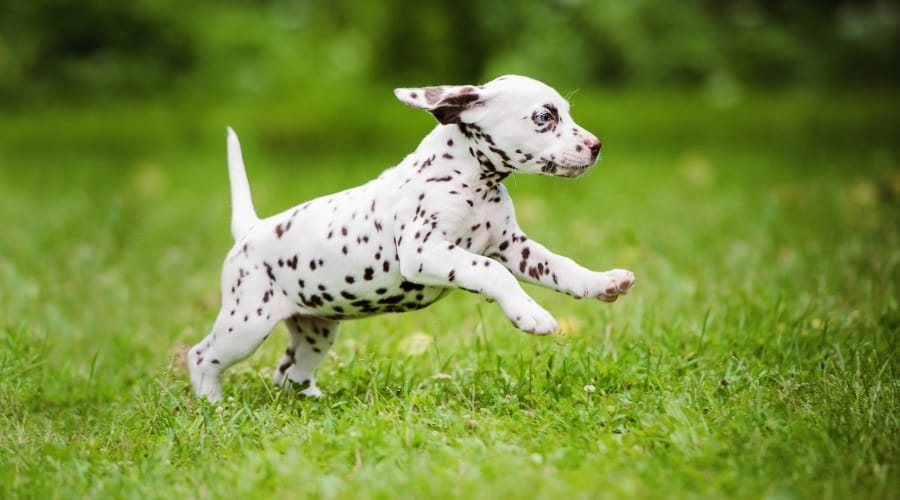
The Dalmatian had the stamina to trot alongside the coaches over miles and miles of terrain daily. Although the breed’s history is obscure, by the 1800s, Dals were accompanying the Romani as they traveled the continent.
Because the Dalmatian’s original purpose was to guard horses and coaches, their protective instinct remains. They make dependable watchdogs.
Dalmatians are also excellent partners for runners and hikers and are perfect for energetic families. Without a fenced yard and regular exercise, Dalmatians may become noisy and destructive simply because they’ve been unable to burn off enough energy.
2. Norwegian Elkhound
Nordic wolf vibes with a sled dog soul.
Bred to track and hold massive game like moose and bear, Norwegian Elkhounds are strong, bold, and tireless. They need long walks, cold air, and mental stimulation. Skimp on any of it, and they’ll invent winter games indoors.
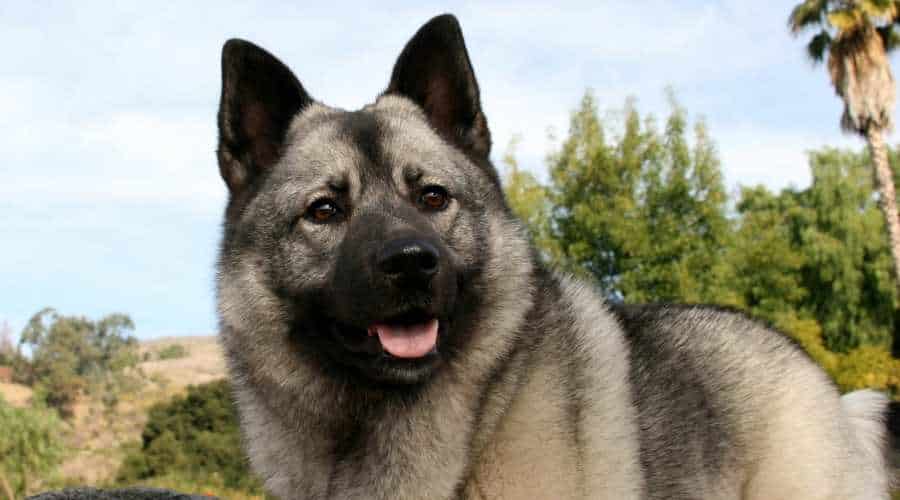
The Norwegian Elkhound is ancient, fearless, and surprisingly fast for a dog that looks like it should be guarding a Viking longhouse.
But don’t let the fluff fool you, this isn’t a couch companion. Elkhounds need vigorous daily exercise, mental challenges, and cool temperatures to really thrive. Cooped up and under-stimulated? Expect nonstop barking, escape attempts, or creative landscaping (read: massive holes).
They’re loyal and protective, but not clingy. And while they’ll follow a scent trail for miles, they won’t always follow you, so early training and recall work are a must. Think of them as a cold-weather athlete with a stubborn streak and an old soul.
3. Saluki
The original supermodel sprinter.
The Saluki is one of the oldest known dog breeds, traced back to ancient Egypt, and it still looks like it walked out of a museum or a high-fashion runway. But under that graceful, aloof exterior is a purebred predator built for serious speed and stamina.
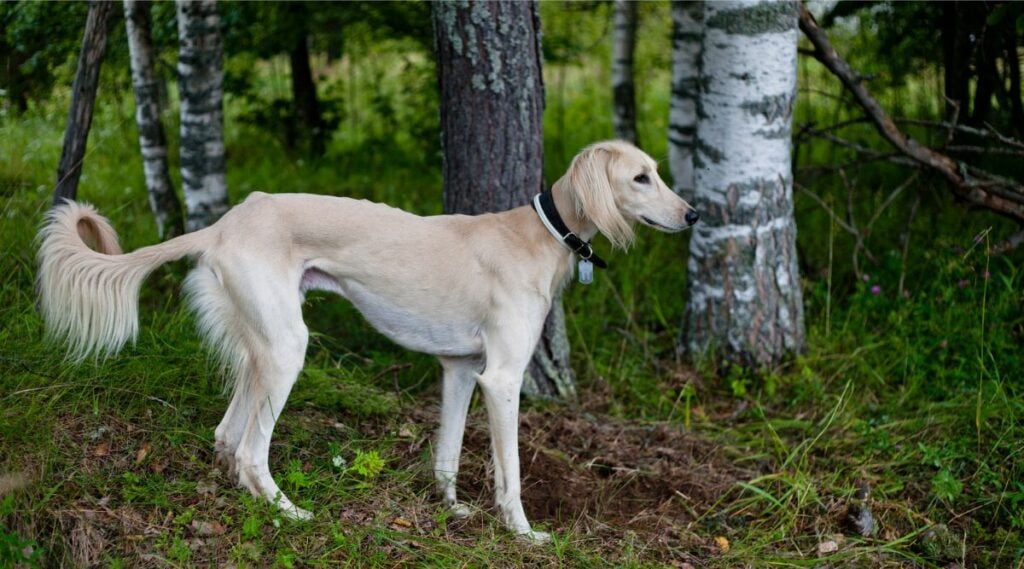
Bred by nomadic tribes to chase down gazelles in the desert, Salukis can hit sprint speeds over 40 mph. They’re not just fast, they’re ghost-level silent, independent, and shockingly athletic.
But don’t expect endless tail wags and cuddles, because this is a dog with a mind of its own. They’re not eager-to-please like Labs. Instead, they’re thinkers, and often aloof with strangers.
Salukis need large, secure spaces to stretch their legs (a fenced-in sprint zone is ideal), and while they’re calm indoors, their energy has to be spent regularly or they’ll become anxious and withdrawn.
A Saluki is stunning, quiet, and athletic with the right outlet. Without it? You’ve got a frustrated Ferrari trapped in a garage.
4. Siberian Husky
All gas, no brakes, and possibly plotting your overthrow.
Huskies were bred to pull sleds over frozen terrain for hours at a time, and they still think that’s the assignment. They’re intelligent, vocal, and highly independent. Without daily high-output exercise, expect escape attempts, howling concerts, or DIY snow trenching in your backyard.
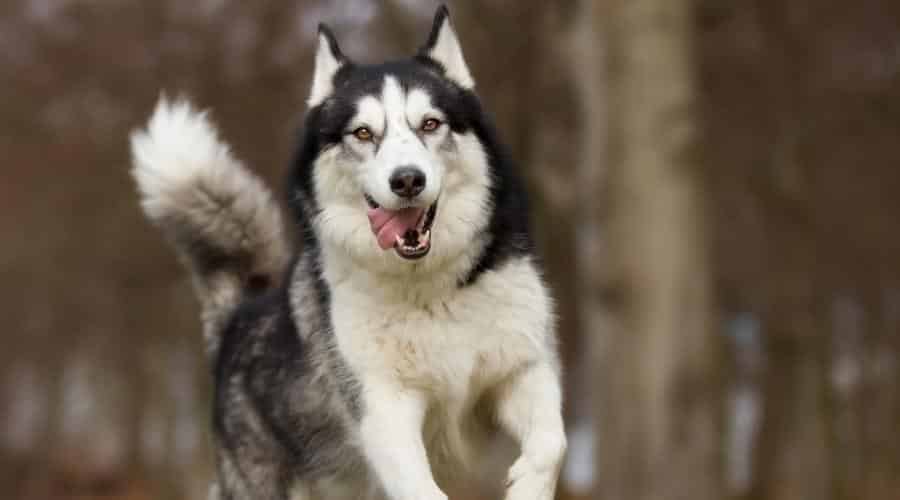
The Siberian Husky’s ancestors were originally bred in northeastern Asia by the Chukchi as family companions and endurance sled dogs. The Chukchi maintained the purity of their sled teams for many generations, and these dogs were the direct forerunners of today’s Siberian Husky.
Huskies still have incredible endurance, and they retain their high prey drive. Early socialization is crucial, but may not be enough to keep your other small furries or pets like chickens safe from harm.
Sharing your active lifestyle with your Husky with regular exercise strengthens your bond and will help you stay healthy and happy. Securely leash your Husky to keep them from bounding away after small animals, and they will make a great jogging partner.
My Experience Dog-Sitting Four Huskies
For one month, I dog-sat four Huskies. I thought I was ready. I had treats, leashes, and a solid walking plan: two hours every morning, one hour every evening. That’s three hours a day of solid cardio. Surely that would do it.
It didn’t. They came home more energized than when we left. Zoomies in the hallway. Wrestling matches at midnight. One even started organizing the shoes by taste.
Meanwhile, my own dog, Bonkers, a sturdy little Bull Terrier mix, lasted maybe 60 minutes before tapping out. He’d flop on the floor and stare at me like, “You signed us up for WHAT?”
Lesson learned: Huskies don’t get tired. They get started.
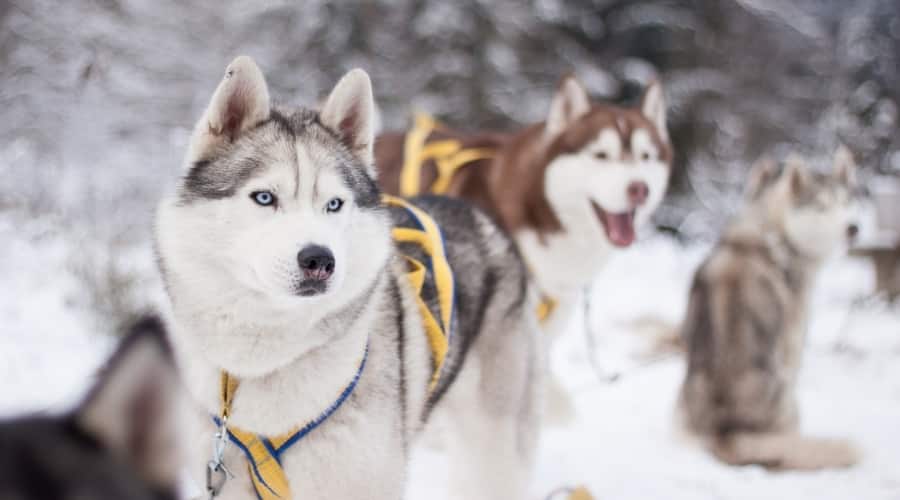
3 Small But Unstoppable High-Energy Dog Breeds
Don’t let the size fool you; these dogs pack more chaos per pound than most large breeds. Originally bred to hunt, herd, and guard, these compact dynamos deliver turbo-level energy in fun-sized bodies. Skip the daily stimulation, and they’ll make your apartment their personal obstacle course.
1. Beagle
Sweet face, savage nose, and absolutely no off switch.
Bred for tracking game, Beagles are driven by scent and stubbornness. They love to follow their nose, and it rarely leads them to your commands. If they’re not exercised, they’ll bark, dig, and hunt dust bunnies like prey.
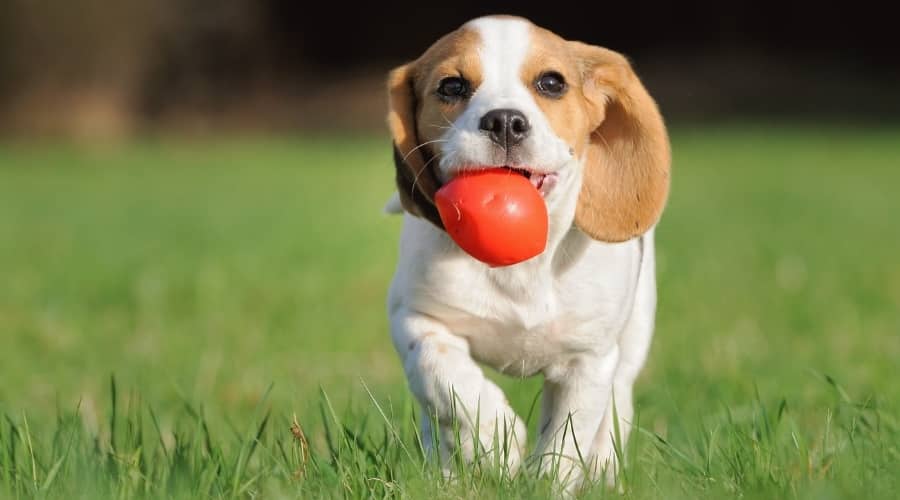
So, although these pups are small, they need plenty of exercise to keep them happy and prevent them from becoming overweight. Ideally, Beagles need two long walks every day, and they should have access to a fenced yard where they can play off-leash.
Beagles still work as hunting dogs in certain parts of the country. They hunt in pairs or packs, and their owners still swear by the breed’s great nose, easy-to-follow voice, and enthusiastic approach to rabbit, fox, and other small game hunting.
Beagles tend to wander, so keep them securely leashed unless you’re in a fenced area. To help keep your Beagle from destructive boredom, entertain them with a selection of Beagle-friendly dog toys.
2. Jack Russell Terrier
One part genius, two parts caffeine.
This tiny terror was bred to hunt foxes underground. Smart, scrappy, and relentless, the Jack Russell needs constant physical and mental action, or they’ll turn into a one-dog demolition crew. Agility courses? Yes. Quiet nights? Not likely.
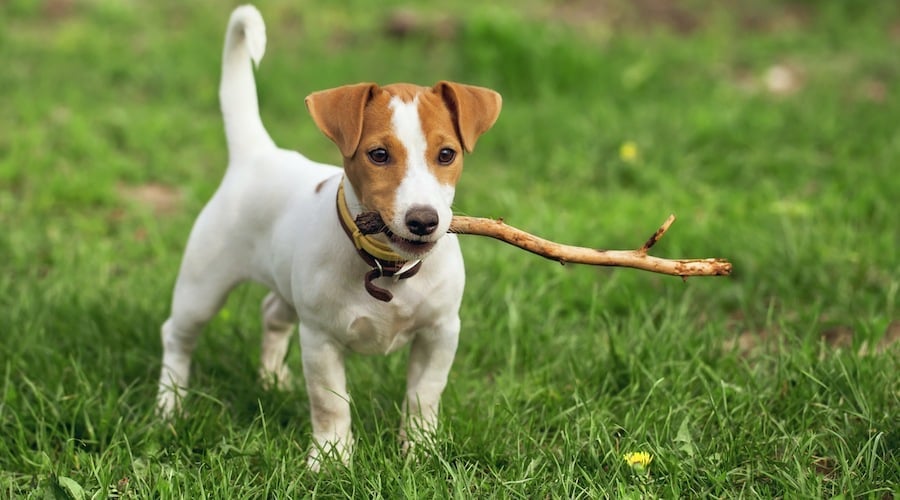
The Jack Russell Terrier, the constant companion of foxhunting equestrians for decades, diverged into two AKC-recognized breeds – the Parson Russell and the Russell Terrier.
Reverend John Russell created the original breed to “go to ground” at the end of the foxhunt. After the fox had been chased back to its den by the pack of foxhounds, it was Russell’s job to dive in and get the fox out of its burrow.
Horses and riders chasing across the countryside to hunt foxes is a thing of the past, but the Russells’ energy and prey drive have not diminished. A ratter and small vermin hunter of great ferocity, they must be well socialized to tolerate cats, and any smaller animal may tempt them to give chase.
If you live in an area with groundhogs and other large rodents, keep your Russell on a leash so their courage doesn’t trap them in a fight they cannot win.
3. Miniature Pinscher
Looks like a toy, acts like a boss.
The “Min Pin” may resemble a mini Doberman, but this breed has its own wild legacy, bred to chase rats and guard territory. They’re bold, high-energy, and surprisingly fast. They’ll run laps across your furniture if they get bored like a caffeinated squirrel.
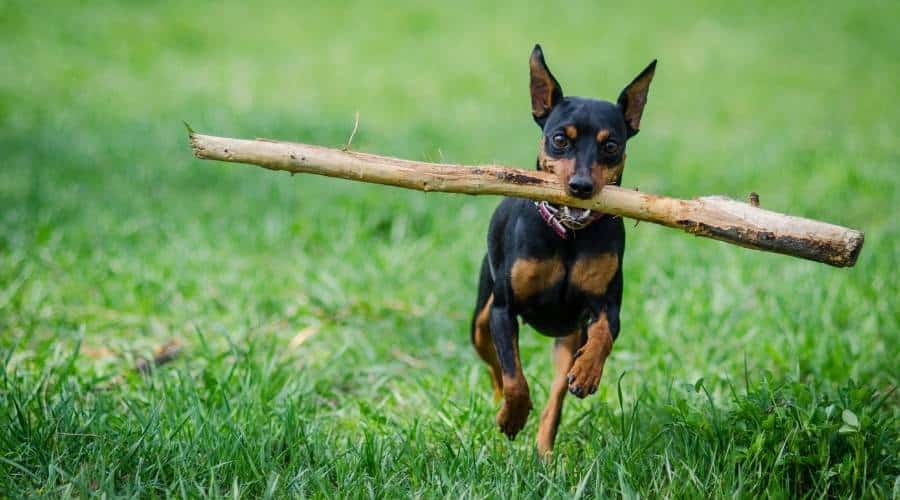
Although Miniature Pinschers have abundant energy, they are small enough that one can meet their exercise needs without a lot of yard space or mileage. Min Pins efficiently eliminated rats on the farmstead, which explains their high prey drive today.
They may give chase to smaller pets and even children. They push the envelope of what they are allowed to get away with. A firm but gentle approach to basic obedience commands will help keep them from running the household.
Bonus: 1 High-Energy Breed With Elegance
Don’t let the haircuts fool you, this dog is a working dog in a runway disguise. Originally bred to retrieve waterfowl, they combine high intelligence, athleticism, and an almost eerie knack for reading their owners. Whether Standard or Miniature, this breed isn’t just fancy, they’re also fast.
1. Poodle
Brains, bounce, and bougie curls.
Poodles excel at everything: agility, obedience, dock diving, and even scent work. They thrive on structured play, mental puzzles, and being one of the smartest dogs in the room. Miss a few exercise sessions? Expect some creative rebellion, like reorganizing your laundry into “fetch” piles.
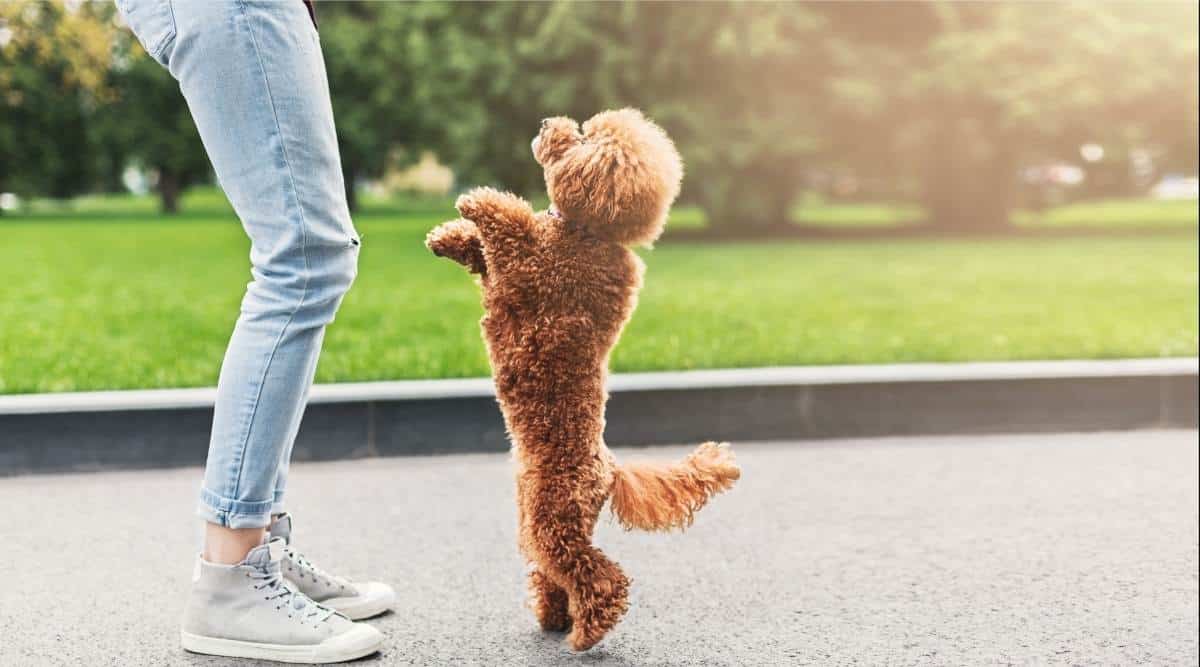
They’re also famously trainable and eager to please, which makes their energy easier to manage if you stay one step ahead. Ignore them, and their genius turns to mischief faster than you can say “professional dog stylist.”
Well known as one of the most intelligent and trainable breeds, Poodles are as mentally high-energy as physically. Poodles may not be as eager to please as some dogs, but their active, thoughtful nature keeps them in tune with their person’s wishes.
There are three Poodle sizes, but the Standard and Miniature are the most active. The popularity of circus “trick dog” shows was one of the driving forces behind breeding smaller versions of the Poodle because the clever, highly trainable dogs were perfect entertainers.
6 Red Flags: Signs You’re Not Meeting Their Energy Needs
High-energy dogs don’t just get “a little bored.” They spiral. Quickly. If you’re skipping workouts or underestimating their mental needs, they will let you know whether that’s with chewed baseboards, backyard excavation projects, or barkathons at 2 a.m.
Here’s how to tell your dog’s not just active, they’re underserved:
- Destruction with enthusiasm: Shoes, pillows, and drywall are fair game.
- Zoomies with purpose: Repeated circuits around the couch at full speed = protest laps.
- Digging ditches: Backyard suddenly looks like a crater field? They’re bored.
- Screaming, not barking: Especially true for Huskies, Beagles, and Vizslas.
- Obsessive behavior: Tail-chasing, shadow-stalking, or pacing like they’re in a thriller.
- Escape artistry: Jumping fences, chewing through crates, or unlocking doors (seriously, some can).
If your dog is acting out, they’re not “bad”, they’re bored. Double their walks, add puzzle feeders, or enroll them in agility. Energy has to go somewhere. Guide it or get steamrolled by it.
Can You Keep Up? 3 Things These High-Energy Dogs Really Need
Walks are a starting point, not a solution. These breeds were built to work all day, and without the right outlet, that energy turns chaotic. Here’s what it actually takes to keep a high-energy dog sane, happy, and not wrecking your life:
1. Mental Stimulation
As important as physical exercise.
- Puzzle toys, scent games, and hide-and-seek. Basically, anything that makes them think
- Training sessions: short, daily, and challenge-based (e.g., learning names of toys, tracking)
- Jobs around the house: carrying a backpack, finding items, or learning tasks
2. Physical Exercise
No, the backyard doesn’t count.
- Two-a-day walks minimum, plus fetch, running, or agility work
- Off-leash sprints in secure areas (especially vital for sighthounds like Salukis or herding breeds like Border Collies)
- Structured play: tug, flirt poles, or advanced fetch variations
3. Daily Routine + Purpose
This is crucial for their sanity, and yours.
- Consistent schedule = stability
- Give them something to “work” toward: tricks, tracking, even canine sports
- Rotate toys, tasks, and training games to prevent boredom burnout
High-energy dogs don’t “chill” naturally; you have to earn their calm. Without a plan, they’ll use that extra energy to redesign your home. With the right outlets? You’ll have a focused, fulfilled, and deeply bonded best friend.
Final Thoughts: Are You Built for a High-Energy Pup?
High-energy dog breeds are amazing, but they’re not for the casually committed. These dogs weren’t bred for chill weekends. They were built for stamina, jobs, and nonstop movement.
With the right outlet, they’re brilliant, loving, and often unstoppable partners. Without one? You’ll be living with a furry, four-legged tornado.
If you’re up for the challenge, you won’t just get a pet, you’ll get a purpose. But if you’re unsure? There’s no shame in choosing a more relaxed companion. Because with these breeds, it’s not about how much you love dogs but how much energy you’ve got to give back.
Gear Up, Plan Smart, Live Big
Living with a high-energy dog isn’t just about keeping up; it’s about staying ahead. These breeds need more than just exercise. They need outlets for their intensity, even when you’re not home.
Durable chew toys can save your furniture. A secure harness can save your shoulder (and your sanity). And a microchip or GPS collar? That’s just smart insurance for a dog who thinks fences are suggestions.
With a little prep and the right tools, your high-energy dog won’t just be a challenge; they’ll be your adventure partner to tackle bucket lists. You bring the structure. They’ll bring the spark. Together, you’ll live a life that’s anything but boring.
What’s the wildest thing your high-energy dog breed has done? Do you live with a Border Collie that outsmarts you daily? Or maybe a Jack Russell that hasn’t sat still since 2019? Share your best high-energy breed story in the comments. Other readers (and future adopters) will thank you.
